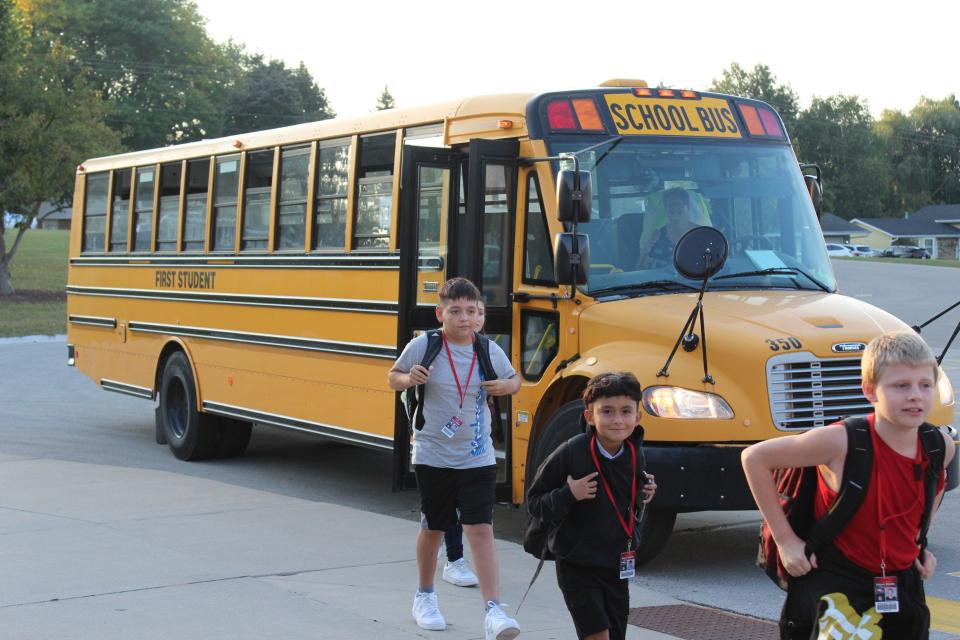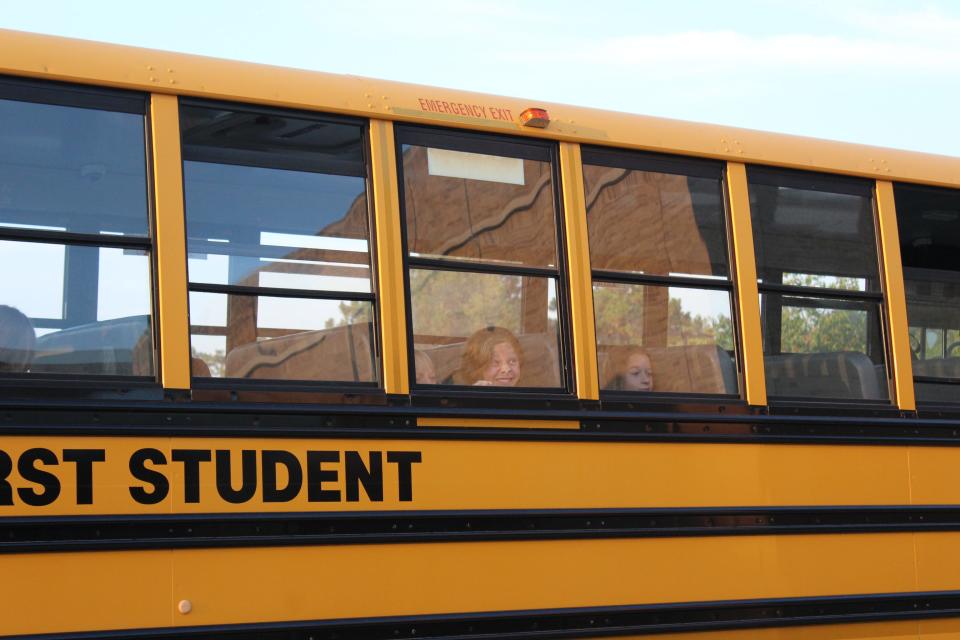Wisconsin has lost almost 20% of its school bus drivers. It's expected to lose more.
Last summer, more than half of school bus contractors were facing shortages of 6% to 15% in Wisconsin and nationwide, according to the the Wisconsin School Bus Association.
With fewer licensed drivers in the state than 15 years ago and a rapidly aging driver pool, the shortage is expected to only get worse, according to a new report from the Wisconsin Policy Forum.

Number of school bus drivers has dropped by almost a fifth
The Wisconsin Policy Forum, a nonpartisan policy research group, found that the shortage is due, in part, to an 18% drop in licensed school bus drivers across the state since 2007.
"The data suggest school bus operations are being stretched thinner over time," the report said.
In Wisconsin, school bus drivers can also drive city passenger buses, but passenger bus drivers cannot necessarily drive school buses. Overall, there are more passenger bus drivers in the state than there are school bus drivers. There are more requirements and training to drive school buses, according to the forum's report.
More: Wisconsin has a school bus driver shortage. How a bipartisan fix made it into law
To become a school bus driver, someone must first get their commercial driver's license, which includes training and testing on operating and maintaining a large vehicle, along with a health examination requirement. They then must pass school bus-specific tests and continue to get health examinations.
The Wisconsin Policy Forum's report found that training for both school and passenger bus licenses varies, with some programs taking 12 weeks and others as little as three.
Bus driver to student ratio rising
The number of public and private school students in Wisconsin per licensed school bus driver has increased from 60 in 2007 to 69 in 2022, according to the report.
But the organization cautioned that this metric is a limited tool for determining the true demand for drivers. It reflects the ratio of potential service needs divided by total possible drivers, not an estimate of the number of students per busload.
Drivers are aging
The school bus drivers who are licensed are aging. About 23% are at least 65 years old.
Bus driver retirements are likely to outpace declining student enrollment, causing larger student to bus driver ratios.
"This driver shortage likely will continue to impact school bus and transit services for the foreseeable future and may well intensify," the report said.
Districts are outsourcing bus drivers to private companies
School districts are increasingly contracting out their bus driving services to private companies instead of having drivers directly employed with the district.
Seven years ago, 267 Wisconsin districts employed 4,500 drivers. By 2023, the numbers had dropped to 219 districts employing 3,000 drivers, the report found.
That suggests a shift to private vendors for some districts, including the Madison and Kenosha school districts, two of the biggest districts in the state.
"While this shift likely is not the cause of the decline in licensed drivers, it may make it harder for school districts to track and understand how many drivers are available," the report said.

What would help fix the bus driver shortage?
The report said it will be difficult to get more bus drivers. One option is to increase salaries, but that also affects cash-strapped school districts.
Reducing training or other background requirements could also help but are likely unwise, given the tremendous responsibility of driving buses full of children, the report said. A potential middle ground could be reducing training requirements around bus maintenance.
Another suggestion by the Wisconsin Policy Forum is for transit systems, school districts and bus contractors to share assets and drivers. For example, the Green Bay School District has a partnership with the city of Green Bay so that students can ride city buses for free.
Danielle DuClos is a Report for America corps member who covers K-12 education for the Green Bay Press-Gazette. Contact her at dduclos@gannett.com. Follow on Twitter @danielle_duclos. You can directly support her work with a tax-deductible donation at GreenBayPressGazette.com/RFA or by check made out to The GroundTruth Project with subject line Report for America Green Bay Press Gazette Campaign. Address: The GroundTruth Project, Lockbox Services, 9450 SW Gemini Drive, PMB 46837, Beaverton, Oregon 97008-7105.
This article originally appeared on Green Bay Press-Gazette: Wisconsin lost 18% of its school bus drivers. It'll likely lose more

